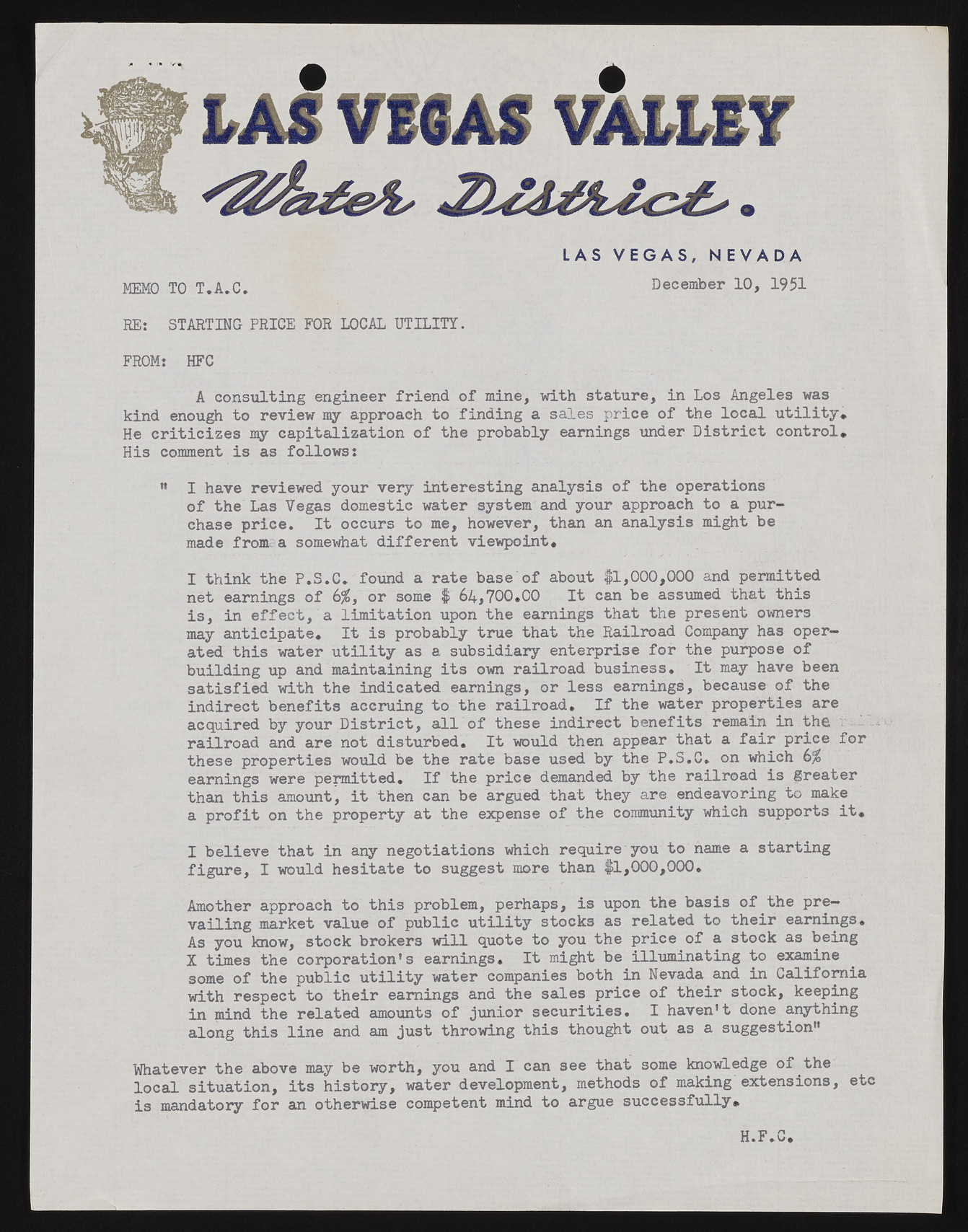Copyright & Fair-use Agreement
UNLV Special Collections provides copies of materials to facilitate private study, scholarship, or research. Material not in the public domain may be used according to fair use of copyrighted materials as defined by copyright law. Please cite us.
Please note that UNLV may not own the copyright to these materials and cannot provide permission to publish or distribute materials when UNLV is not the copyright holder. The user is solely responsible for determining the copyright status of materials and obtaining permission to use material from the copyright holder and for determining whether any permissions relating to any other rights are necessary for the intended use, and for obtaining all required permissions beyond that allowed by fair use.
Read more about our reproduction and use policy.
I agree.Information
Digital ID
Permalink
Details
More Info
Rights
Digital Provenance
Publisher
Transcription
MEMO TO T.A.C. L A S V E G A S , N E V A D A December 10, 1951 RE: STARTING PRICE FOR LOCAL UTILITY. FROM: HFC A consulting engineer friend of mine, with stature, in Los Angeles was kind enough to review my approach to finding a sales price of the local utility. He criticizes my capitalization of the probably earnings under District control. His comment is as follows: * I have reviewed your very interesting analysis of the operations of the Las Vegas domestic water system and your approach to a purchase price. It occurs to me, however, than an analysis might be made from a somewhat different viewpoint, I think the P.S.C, found a rate base of about $1,000,000 and permitted net earnings of 6$, or some $ 64,700,00 It can be assumed that this is, in effect, a limitation upon the earnings that the present owners may anticipate. It is probably true that the Railroad Company has operated this water utility as a subsidiary enterprise for the purpose of building up and maintaining its own railroad business. It may have been satisfied with the indicated earnings, or less earnings, because of the indirect benefits accruing to the railroad. If the water properties are acquired by your District, all of these indirect benefits remain in the. ; railroad and are not disturbed. It would then appear that a fair price for these properties would be the rate base used by the P.S.C, on which 6% earnings were permitted. If the price demanded by the railroad is greater than this amount, it then can be argued that they are endeavoring to make a profit on the property at the expense of the community which supports it, I believe that in any negotiations which require you to name a starting figure, I would hesitate to suggest more than $1,000,000. Amother approach to this problem, perhaps, is upon the basis of the prevailing market value of public utility stocks as related to their earnings. As you know, stock brokers will quote to you the price of a stock as being X times the corporation's earnings. It might be illuminating to examine some of the public utility water companies both in Nevada and in California with respect to their earnings and the sales price of their stock, keeping in m-ind the related amounts of junior securities. I haven't done anything along this line and am just throwing this thought out as a suggestion" Whatever the above may be worth, you and I can see that some knowledge of the local situation, its history, water development, methods of making extensions, etc is mandatory for an otherwise competent mind to argue successfully. H.F.C

